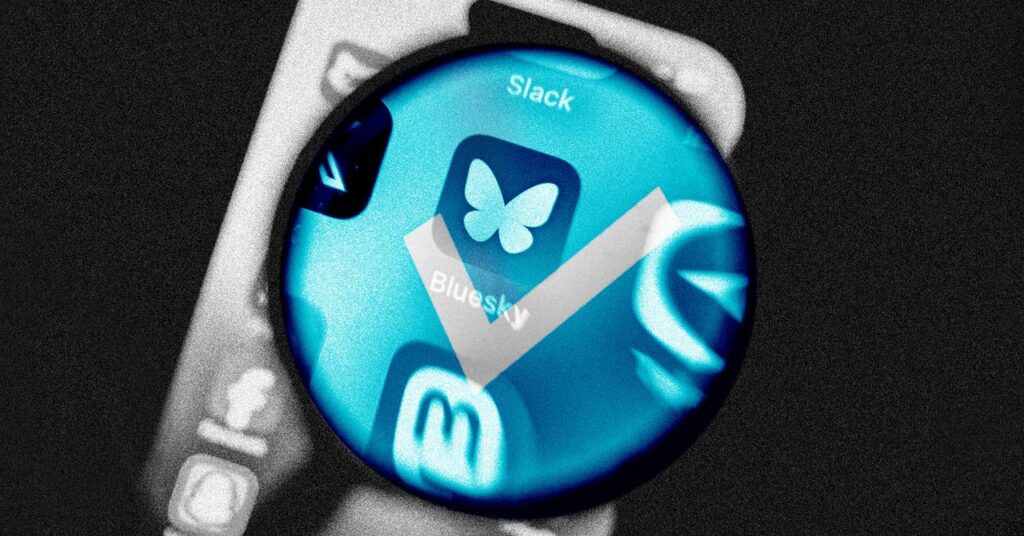Starting today, Bluesky is rolling out a new verification system, complete with the familiar blue check marks popularized by Twitter.
The social platform, which has experienced rapid growth since it opened to the public in early 2024, formerly relied on an unconventional self-verification system where users could “authenticate” themselves by including custom domains in their web handles. Now it’s adopting a more proactive and traditional verification strategy, with the Bluesky team identifying notable accounts and bestowing blue check marks.
“It’ll be a rolling process as the feature stabilizes, and then we’ll launch a public form that people can use to request verification,” says CEO Jay Graber. The highest-priority accounts right now are government officials, news organizations and journalists, and celebrities.
As Bluesky has grown, it has seen an uptick in impersonators posing as public figures, as MIT Technology Review documented last year. To meet growing demand for ways to confirm that accounts are legit, some Bluesky power users have taken it upon themselves to create their own verification systems. As the app continues to attract celebrity users—former president Barack Obama joined earlier this spring—a more formal verification process will help reassure public figures that Bluesky is a safe digital hangout space. “We want to reduce fraud and impersonation and drive a more trustworthy environment on Bluesky,” Graber says.
Rolling out what is pretty close to a dupe of Twitter’s original verification system is not groundbreaking stuff. It’s savvy, nonetheless. The reason social networks like Instagram and TikTok aped the blue check approach wasn’t because they necessarily wanted to copy a rival’s features. It was because these symbols had been successfully established as a visual cue that an account had been vetted.
When Elon Musk purged the microblogging platform’s legacy blue check marks in favor of a pay-to-play approach, he zapped the symbol’s practical value within the X ecosystem and gave grifters and pranksters everywhere a lovely gift. Still, outside of X a blue check remains an easy shorthand for “probably not fake.”
In addition to this traditional, top-down verification approach, Bluesky is also offering “trusted verifier” status to a select group of vetted organizations. These organizations will be given a scalloped blue check mark on their Bluesky accounts. The initial batch of publications selected as trusted verifiers includes The New York Times and WIRED, with more in the works.
Whether an account is verified by Bluesky itself or by these third-party “trusted verifiers,” the blue check mark it receives will look identical. When users click or tap on the check mark, they will see a list of which organizations verified the account. For example, clicking on a blue check next to a WIRED reporter’s name would show that WIRED verified their identity and may show that Bluesky and other organizations also verified it. “Multiple organizations can verify one account,” Graber says.
The introduction of the trusted verifier system on top of the conventional, centralized verification offering is a nod to Bluesky’s general philosophy of decentralization. It’s also, one suspects, a deeply practical move, as the company’s head count remains under 25 people.
Bluesky users should begin to see the first official blue check marks today.
